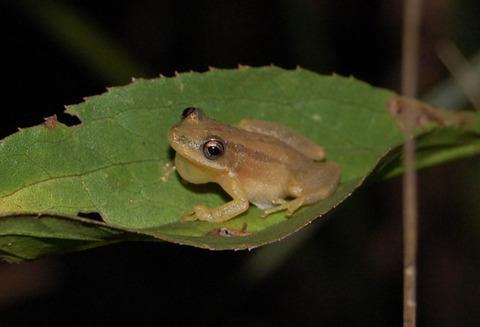Our official English website, www.x-mol.net, welcomes your
feedback! (Note: you will need to create a separate account there.)
Seasonality drives body size variation in a widely distributed Neotropical treefrog
Journal of Zoology ( IF 1.9 ) Pub Date : 2020-05-23 , DOI: 10.1111/jzo.12787 N. C. Pupin 1 , F. Brusquetti 2 , C. F. B. Haddad 1
Journal of Zoology ( IF 1.9 ) Pub Date : 2020-05-23 , DOI: 10.1111/jzo.12787 N. C. Pupin 1 , F. Brusquetti 2 , C. F. B. Haddad 1
Affiliation

|
It is well known that body size variation can be related to genetic and environmental factors and that this variation may occur among species, and among and within populations. Scinax fuscomarginatus is a widely distributed Neotropical anuran that occurs in open areas of several South American ecoregions, exposed to different climatic conditions and showing high levels of body size variation. We tested if this variation in body size is related to phylogeny or to any climatic condition to which populations are subjected. We measured the snout‐vent length (SVL) of 285 individuals of S. fuscomarginatus from 37 populations, covering virtually all the known geographic distribution of the species. We constructed a phylogenetic tree under Bayesian inference based on mtDNA sequences to test for the existence of phylogenetic signal in body size variation and performed a multiple linear regression to examine the relationship between body size and environmental variables. Although S. fuscomarginatus shows a deep genetic structure, body size variation was randomly distributed across the phylogeny, indicating no phylogenetic signal. On the other hand, we found evidence that support some influence of climatic conditions in body size variation, being the precipitation seasonality and the temperature seasonality the most important variables. Our results are in accordance with the water conservation hypothesis, which predicts an increase in body size towards drier regions assuming that lower surface‐to‐volume ratio of larger bodies minimizes water loss by evaporation.
中文翻译:

季节性驱动广泛分布的新热带雨蛙的体型变化
众所周知,体型变化可能与遗传和环境因素有关,这种变化可能发生在物种之间,种群之间和种群内部。Scinax fuscomarginatus是一种分布较广的新热带无尾熊,发生在南美几个生态区的空旷地区,暴露于不同的气候条件下,体型变化很大。我们测试了这种体型的变化是否与系统发育或种群所处的任何气候条件有关。我们测量了285例S. fuscomarginatus的鼻出口长度(SVL)来自37个种群,几乎涵盖了该物种的所有已知地理分布。我们基于mtDNA序列在贝叶斯推理下构建了系统发育树,以测试体型变异中系统发育信号的存在,并进行了多元线性回归以检查体型与环境变量之间的关系。尽管福氏链球菌显示出很深的遗传结构,体型变异在整个系统发育过程中是随机分布的,表明没有系统发育信号。另一方面,我们发现有证据支持气候条件对人体尺寸变化的某些影响,其中降水季节和温度季节是最重要的变量。我们的结果与节水假说相符,该假说假设较大的物体较低的表面积与体积的比率可最大程度地减少蒸发引起的水分流失,从而预测朝向干燥区域的物体尺寸会增加。
更新日期:2020-05-23
中文翻译:

季节性驱动广泛分布的新热带雨蛙的体型变化
众所周知,体型变化可能与遗传和环境因素有关,这种变化可能发生在物种之间,种群之间和种群内部。Scinax fuscomarginatus是一种分布较广的新热带无尾熊,发生在南美几个生态区的空旷地区,暴露于不同的气候条件下,体型变化很大。我们测试了这种体型的变化是否与系统发育或种群所处的任何气候条件有关。我们测量了285例S. fuscomarginatus的鼻出口长度(SVL)来自37个种群,几乎涵盖了该物种的所有已知地理分布。我们基于mtDNA序列在贝叶斯推理下构建了系统发育树,以测试体型变异中系统发育信号的存在,并进行了多元线性回归以检查体型与环境变量之间的关系。尽管福氏链球菌显示出很深的遗传结构,体型变异在整个系统发育过程中是随机分布的,表明没有系统发育信号。另一方面,我们发现有证据支持气候条件对人体尺寸变化的某些影响,其中降水季节和温度季节是最重要的变量。我们的结果与节水假说相符,该假说假设较大的物体较低的表面积与体积的比率可最大程度地减少蒸发引起的水分流失,从而预测朝向干燥区域的物体尺寸会增加。











































 京公网安备 11010802027423号
京公网安备 11010802027423号